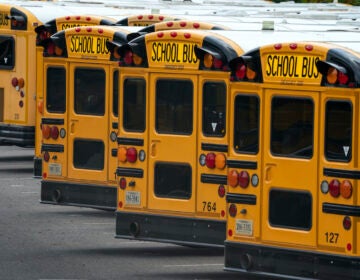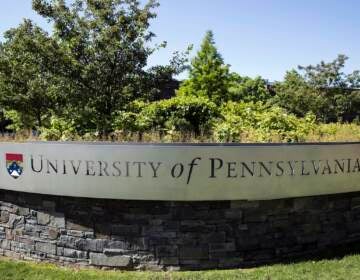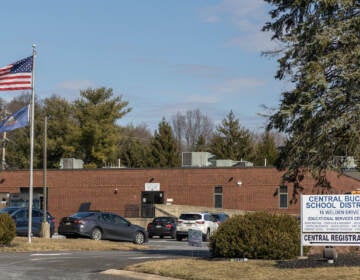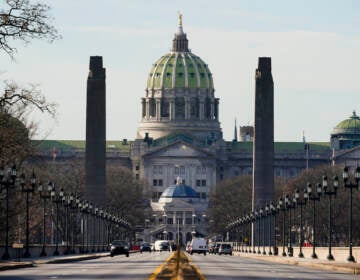Pa. school funding trial kicks off with competing visions of ‘thorough and efficient’
The plaintiffs — six school districts, four parents, and two statewide organizations — argue state funding for schools is inadequate, inequitable, and illegal.
Listen 4:42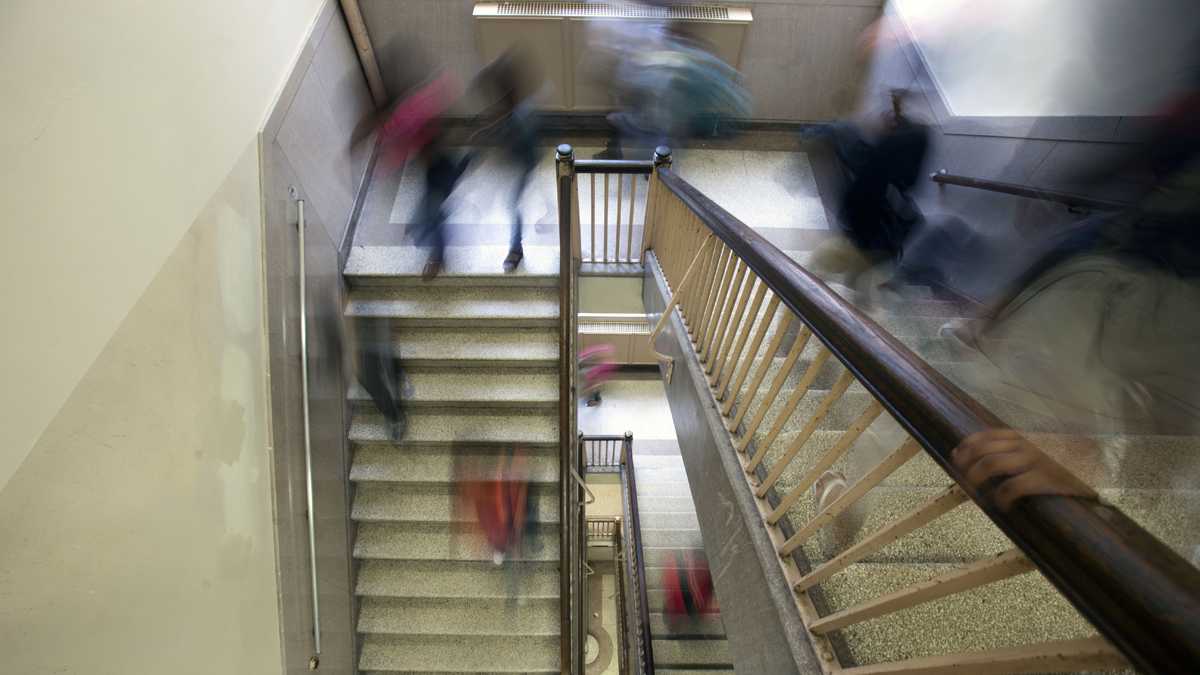
Pennsylvania public school students change classes. (Photo by Jessica Kourkounis)
A landmark case that could dramatically change the way Pennsylvania funds its public schools began in Commonwealth Court today, seven years after it was filed.
The case centers on wide spending gaps among the state’s poorest and wealthiest school districts.
The plaintiffs — six school districts, four parents, and two statewide organizations — argue state funding for schools is inadequate, inequitable, and illegal.
They say Pennsylvania is violating the state constitution’s education clause, which requires lawmakers to “provide for the maintenance and support of a thorough and efficient system of public education,” as well as its equal protection clause.
During an opening statement Friday, Katrina Robson, a lawyer for the plaintiffs, said the authors of that clause chose their words very carefully.
“They didn’t provide for just any level of education. This wasn’t a check the box exercise,” she said. “They are words that require more than a bare minimum. Words that require a system that serves all children, not just some. The question before this court is whether the General Assembly has met its mandate. We will show that it has not.”
Robson is with the private firm O’Melveny & Myers, part of a team representing the plaintiffs that also includes the Public Interest Law Center and Education Law Center.
Patrick Northen, an attorney representing GOP House Speaker Bryan Cutler — one of several defendants in the case — offered a different take on the language in his opening statement.
Those same authors, he said, also considered including the word “uniform” but ultimately left it out, as a way to “protect local school district prerogatives over state control.”
“The framers were also worried about a race to the bottom, meaning that rather than elevating lower performing schools to do better, a uniformity clause might cause higher performing schools to weaken their efforts,” Northen said.
Commonwealth Judge Renee Cohn Jubelirer, a Republican on the bench since 2001, is presiding over the case.
Robson said, over the course of the case, her team will present a lot of numbers: standardized test scores, high school graduation rates, college completion rates.
All these numbers will demonstrate that the Pennsylvania education system is not “thorough and efficient,” according to some of its own assessments.
“But this isn’t a case about numbers,” Robson said. “It’s a case about people. It’s about children struggling to overcome circumstances that they can’t control. Children who see the resources available at other schools and not available at theirs and who walk away believing that that means they are somehow worth less than their peers.”
It’s also a case about school teachers, administrators, and staff who struggle to educate students in oversized classes and “crumbling classrooms without sufficient resources,” including counselors balancing impossible caseloads and administrators “pulling double duty as facility repairmen,” she said.
Local burden
A key part of how districts ended up here, Robson argued, is Pennsylvania’s heavy reliance on local taxes to fund schools.
According to federal statistics, Pennsylvania ranks 45th among states in the percent of school funding that comes from state coffers — putting more of the burden on a district’s ability to generate revenue from local taxes.
In 2019-20, the most recent school year for which the Pa. Department of Education has revenue data, about 58% of all K-12 public school funding in the state came from local sources. State revenue accounted for about 34%, with the remainder mostly coming from the feds.
“Taxable wealth varies dramatically across school districts,” Robson said, leading to what she called one of the largest gaps of any state in the country, per child, between poor and wealthy districts.
Robson previewed some of the witnesses who will speak over the coming weeks, including a 5th grade teacher at Panther Valley Intermediate School in Carbon County who teaches from a textbook that was last updated in 1997 and pays out of pocket for school supplies.
“Panther Valley lacks wealth, but it doesn’t lack heart,” Robson said. “Panther Valley residents pay the highest tax rate in their county. In a state with 500 school districts, Panther Valley’s tax rate is the 10th highest. They are trying desperately, but they need help.”
In a pre-trial brief, the petitioners argued the current funding model creates a “system of educational haves and have nots.”
The brief notes that 44% of the state’s third graders fail to meet state proficiency standards in math, and 38% fall short in English, with high schoolers fairing only slightly better.
“By every measure, the results are far more disastrous for low-wealth school districts, and the economically disadvantaged children they educate,” the brief continues. “Compared to their more fortunate peers, those children are less likely to be proficient on state exams from the first moment they are tested to the last.”
The petitioners also argue that the current funding system disproportionately affects students of color, noting that half of the state’s Black students of 40% of Latino students attend school in the poorest 20% of districts.
In the leadup to the trial, Republican legislative leaders attempted to block evidence that Black and Latino students fare worse in Pennsylvania’s school system, arguing that because the plaintiffs aren’t claiming the state is intentionally discriminating against students of color, the evidence is irrelevant.
Judge Jubelirer dismissed that argument, and ruled that the petitioners can present some information, including achievement gaps and variations in graduation rates, but not “background evidence” like employment discrimination or incarceration rates.
In his opening statement, GOP attorney Northen said evidence and arguments comparing the resources and opportunities available in the petitioner school districts with those in wealthier districts are “red herrings that are an appeal to sympathy or to vague notions of fairness in a generic sense, rather than an argument rooted in the language of the constitution.”
He noted that Pennsylvania ranks near the top, nationally, in the amount of money it spends per student, and that the state is now spending about $2 billion more on public education per year than it did when the lawsuit was first filed.
“When petitioners cite that Pennsylvania ranks towards the bottom of states in the percentage of funds received from the state, we think, frankly, that that is a misleading statistic,” Northen said. “It doesn’t reflect that the commonwealth is spending too little on education. It reflects that there are certain school districts in the commonwealth that choose to tax and spend a lot of money on their own students, which is exactly what was envisioned when the framers rejected a uniformity provision.”
Northen added that since the suit was filed, the state passed a student-based school funding formula that takes factors including poverty and number of English Language Learners into account, shifting new basic education funding more towards high-need, mostly low-wealth districts.
The petitioners have noted that this formula only applies to a fraction of state funding, and argue that it therefore isn’t sufficient to close spending gaps.
Northen said Pennsylvania students have opportunities to succeed, and “the fact that some students are better equipped to take advantage of opportunities offered, or perhaps are more industrious, doesn’t negate the fact that opportunities exist.”
Anthony Holtzman, an attorney representing GOP Senate President Pro Tempore Jake Corman, argued that the petitioner school districts have the resources they need to offer their students a “constitutionally sufficient education,” listing a wide range of courses and extracurriculars offered in each district. The same holds true across the commonwealth, he said.
“Pennsylvania’s public school students receive a free, high quality education that’s well-suited to prepare them to be successful in school and beyond,” Holtzman said. “You’ll see that during the trial, the petitioners cannot meet their ‘very heavy burden’ to show that Pennsylvania’s school financing regime causes a large number of school districts throughout the commonwealth to provide their students with a constitutionally inadequate education.”
The school funding lawsuit was originally filed in 2014, with plaintiffs suing the state legislature, governor, and state department of education.
The Commonwealth Court, with a bench that tilts Republican, initially dismissed the case; in previous Pa. school funding suits, courts have ruled the issue is best left to the state legislature. The state Supreme Court, which tilts Democratic, reversed that decision in 2017.
The six plaintiff school districts are William Penn, Panther Valley, Lancaster, Greater Johnstown, Wilkes-Barre, and Shenandoah Valley.
A Philadelphia parent is also among the plaintiffs, as well as the Pennsylvania Association of Rural and Small Schools and the state conference of the NAACP.
Wolf’s role
After Robson’s opening statement, a lawyer representing Democratic Gov. Tom Wolf, Secretary of Education Noe Ortega, and the Pennsylvania Department of Education addressed the court.
Wolf and his administration initially opposed the suit going to trial, but later changed course and asked for the case to move forward.
Their lawyer, Christopher Lewis, laid out some of the steps the Wolf administration has taken to improve education outcomes and close achievement gaps, but did not challenge Robson’s claims.
“The executive respondents view their role as assisting the court in understanding the statutory, regulatory, and policy rationales that frame Pennsylvania’s public education system,” Lewis said.
The lawsuit does not spell out a specific dollar amount the state should spend on education, or a specific funding formula. Plaintiffs argue that will be up to the legislature to decide if their case is successful.
The trial is expected to last eight to 10 weeks, with lawyers calling dozens of witnesses including school administrators and funding experts.
Maura McInerney, legal director at the Education Law Center and a lawyer for the plaintiffs, hopes the trial shines a light on the current disparities in the state’s school system, and the need for funding reform.
“What I think this trial will expose is the horrendous impact of underfunding in our low-wealth school districts,” she said. “I think that the children who live there and the families know it very well, the schools know it very well, but I don’t know that everyone across the commonwealth knows what’s really happening.”
However the Commonwealth Court rules, the losing side will likely appeal the case to the state Supreme Court.
Outside the courtroom, students, parents, educators and activists rallied on the steps of the state capitol, calling for fair and adequate funding.
Jimi Chavalaporn, a senior at Pottstown High School in Montgomery County, told Keystone Crossroads he saw the funding gap up close.
He used to go to school in a wealthier district — Springfield Township — and felt like he had what he needed to succeed.
“But when I moved to Pottstown and went into their school district, the differences were absolutely there,” Chavalaporn said. “The classrooms looked totally different,” there wasn’t the same technology, like Chromebooks, and teachers had fewer resources to support students.
There are moments, like when he walks down the school hallways and sees water stains on the ceiling, that the gap between districts feels especially stark.
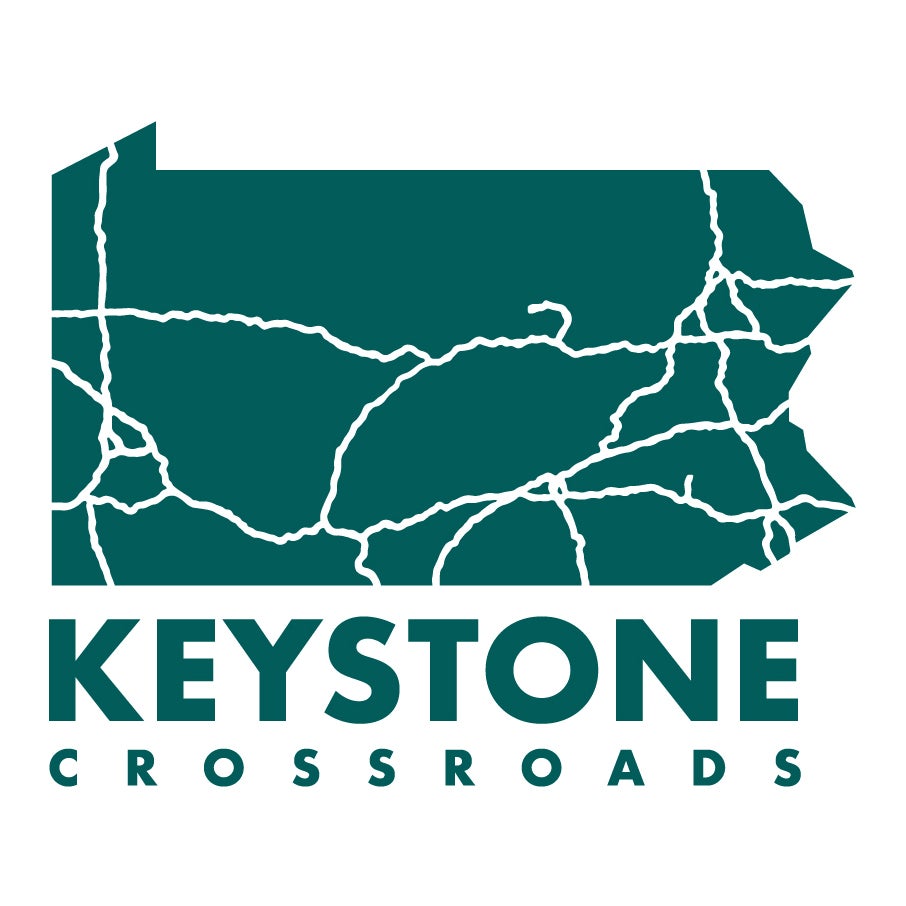
Get more Pennsylvania stories that matter
WHYY is your source for fact-based, in-depth journalism and information. As a nonprofit organization, we rely on financial support from readers like you. Please give today.




